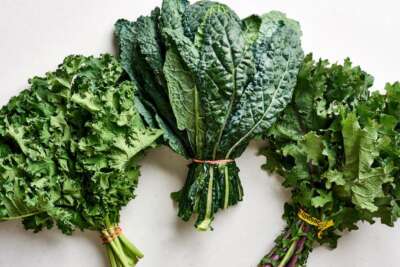
As kids, most of us were told to always eat our greens. And our caregivers were simply following a long line of tradition. For thousands of years, humans have cultivated and consumed green plants. But why, exactly? It turns out dark leafy greens aren’t just healthy, they are, in fact, nutritional powerhouses. Dark leafy greens have been labeled as a superfood purely for the sheer amount of goodness they offer us. But let’s dig a little deeper.
There are many reasons why leafy greens are good for your health. They are full of antioxidants, they are rich in nutrients like iron, calcium, magnesium, potassium and vitamin C, plus they provide your digestive tract with healthy fiber. All of this makes leafy greens an item that should be eaten on a daily basis. But the reality is that most of the population only eats leafy greens about 1-3 times per week. And because of this, and other nutritional deficits, we are quickly become a severely sick and diseased population.
Vision issues are one of the fastest growing health issues in the modern world. Macular degeneration is one of the leading causes of vision loss in those over the age of 60. This eye disease affects as many as 11 million people in the US alone. But macular degeneration and many other diseases, are preventable and frequently reversable with proper lifestyle choices.
Nitrates are found in dark leafy greens and for many years, nitrates have been demonized. But as more research is being done, the conventional wisdom surrounding nitrates is being challenged.
Nitrates are naturally occurring components found in the soil and in the items that are grown in the soil. Nitrates include sodium nitrates and NO3. Nitrates are then chemically reduced to nitrites that are commonly added to meats to preserve color and freshness. The evidence of actual harm from nitrates is sparse and recent studies have shown that they may not be as big a concern as once thought and actually have some benefits. The conversion of dietary nitrate and nitrite to nitric oxide is a beneficial process that dilates and relaxes arteries, lowers blood pressure, boosts athletic performance and can help prevent heart disease. So it turns out that nitrates that occur naturally in vegetables are in fact very beneficial to human health.
Now take the info just provided about how naturally occurring nitrates actually dilate and relax the arteries and apply it to a vision issue like macular degeneration. It’s a game changer. Age-related macular degeneration (AMD) which affects the retina at the back of the eye, impedes central vision, causing dark spots, distortions, wavy lines, blurry vision and gives colors a faded appearance.
AMD risk factors include being over 60, being overweight, being a smoker or having a chronic inflammatory / autoimmune disease. Having high blood pressure, high cholesterol, being Caucasian and having a family history of the disease can also raise the risk. And of course, diet plays a crucial role. Studies show that consuming large amounts of saturated fats can definitely raise the risk of being diagnosed with AMD.
In a 15 year long study published in the Journal of the Academy of Nutrition and Dietetics, researchers evaluated the effects of vegetable nitrates on the odds of developing macular degeneration in 2000 adults aged 49 and older. What they found was incredible. The studies confirmed that people who ate between 100 – 142 mg of vegetable nitrates daily had a 35% lower chance of developing early AMD, than people who ate less than 69 mg per day.
And if this weren’t enough of a reason to eat your veggies, another study supports the ability of nitrates to protect against a different type of eye disorder called primary open-angle glaucoma. Glaucoma involves the accumulation of fluid in the eye, which damages the optic nerve and causes vision loss at the periphery of the vision field. The study of over 100,000 participants over the age of 40, published in JAMA Ophthalmology, showed that those who ate about 240 mg of nitrates per day were 21% less likely to have developed glaucoma. And in this study, 57% of the participants got their daily nitrates from dark leafy greens.
With all this information, you may be wondering which leafy greens are best? The veggie containing the highest nitrate concentration is arugula. Arugula contains 480 mg of nitrate per serving! This leafy lettuce is affectionately known as “rocket” lettuce and it is actually a very nutrient dense cruciferous vegetable. Arugula contains cancer fighting components known as isothiocyanates, it is packed with vitamins A and K, and it contains the carotenoids lutein and zeaxanthin, which promote eye health. Arugula has a zesty flavor that can be used in salads, wraps, soups, stews and pasta dishes.
So the next time you sit down to a meal, think about how the food you’re about to eat is going to serve you. Is it just a meal of convenience or comfort? While we all need to indulge from time to time, eating comfort foods on a regular basis can actually contribute to things like vision loss, diabetes, heart disease and even cancer. But with a little thought and planning, you can incorporate healthy foods like arugula and other leafy greens into your meal plans, giving you a better chance at keeping disease at bay. Give it a try. You’ve truly got nothing to lose and everything to gain.

